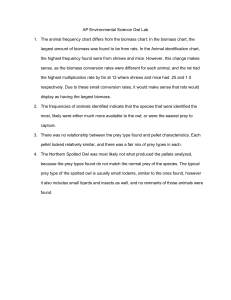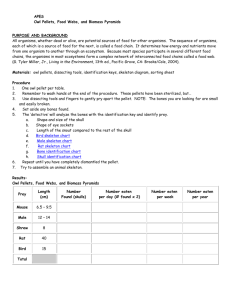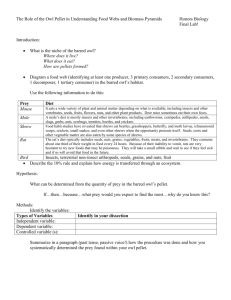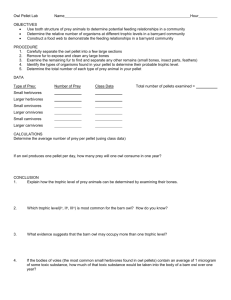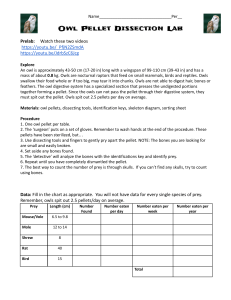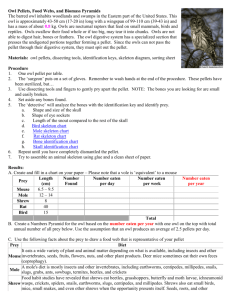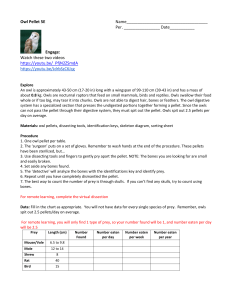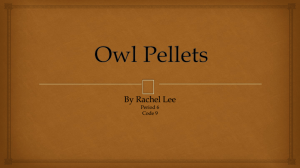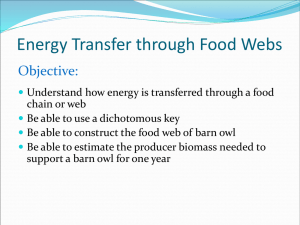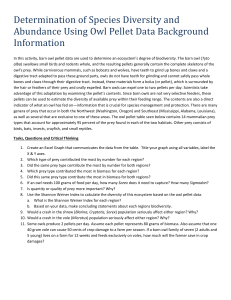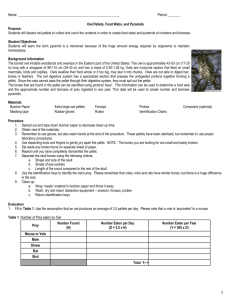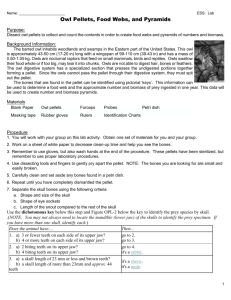owl pellet part 3
advertisement
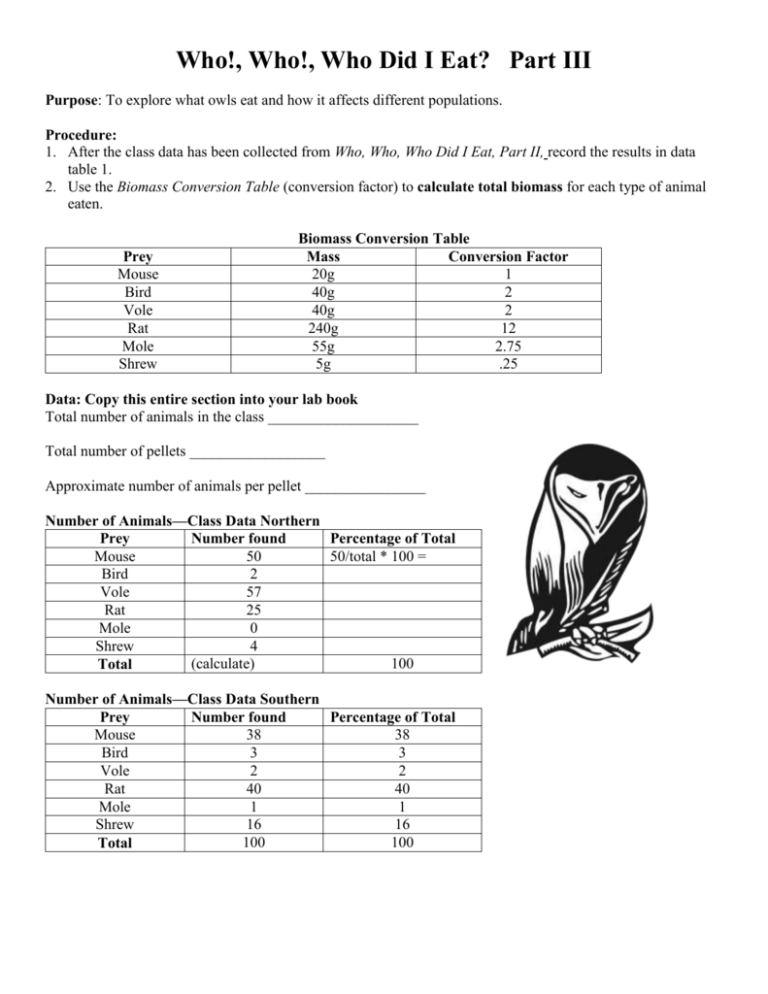
Who!, Who!, Who Did I Eat? Part III Purpose: To explore what owls eat and how it affects different populations. Procedure: 1. After the class data has been collected from Who, Who, Who Did I Eat, Part II, record the results in data table 1. 2. Use the Biomass Conversion Table (conversion factor) to calculate total biomass for each type of animal eaten. Prey Mouse Bird Vole Rat Mole Shrew Biomass Conversion Table Mass Conversion Factor 20g 1 40g 2 40g 2 240g 12 55g 2.75 5g .25 Data: Copy this entire section into your lab book Total number of animals in the class ____________________ Total number of pellets __________________ Approximate number of animals per pellet ________________ Number of Animals—Class Data Northern Prey Number found Percentage of Total Mouse 50 50/total * 100 = Bird 2 Vole 57 Rat 25 Mole 0 Shrew 4 (calculate) 100 Total Number of Animals—Class Data Southern Prey Number found Percentage of Total Mouse 38 38 Bird 3 3 Vole 2 2 Rat 40 40 Mole 1 1 Shrew 16 16 100 100 Total Biomass—Class Data Prey Total biomass Mouse x 1 50*1= Bird x 2 2*2= Vole x 2 57*2= Rat x 12 25*12= Mole x 2.75 0 Shrew x .25 4*.25= (calculate) Total Percentage of Total 50/total * 100 = 0 100 Analysis/Conclusion Questions: Show your work and write in complete thoughts 1. If a barn owl produces one pellet each day estimate the number of animals the owl would eat per year. 2. Using your answer from #1, approximately how many of each type of animal would this consist of? (Northern population only) 3. Compare Northern and Southern data. What differences and what similarities do you see? 4. What do the differences in number two suggest about the Northern and Southern climates, animals, and plants? 5. Calculate the average biomass represented by one pellet. 6. How much biomass does the average owl eat in one year? a) How many mice does this represent? b) How many rats? c) How many voles? d) How many shrews? 7. Explain whether you think this data accurately represents the proportions of animals in the wild, why or why not? Use the following chart to answer questions 8-12 Percentage of Animals as Owl Food in Various States Prey State percentage Colorado Oklahoma Texas Massachusetts Nebraska Mice 32% 35% 40% 5% 51% Birds 4% 1% 3% 1% 1% Voles 53% 1% 2% 64% 40% Rats 1% 54% 32% 1% 1% Moles 1% 1% 1% 11% 1% Shrews 1% 4% 15% 18% 4% Note: other animals like gophers and rabbits make up the additional percentages. 8. Using your number of animals eaten per year from question 1, give the number of mice, shrew, voles, and rats a barn owl from Colorado would eat in a year. (Northern only) 9. If a virus killed all of the rats in the U.S., which states’ barn owl population would be affected the most? 10. Give an explanation for the differences in rat and vole populations between Texas and Oklahoma, and Colorado and Nebraska. 11. How does the class data compare to the data in the chart above? 12. Adult owls must hunt for their young. If a young owl eats one pellet a day until it leaves the nest, how many extra pellets does its mother need to catch in a year if she lays seven eggs each time she nests? What connection might this have to the death rate of young owls? Conclusion: Use your rubric!
